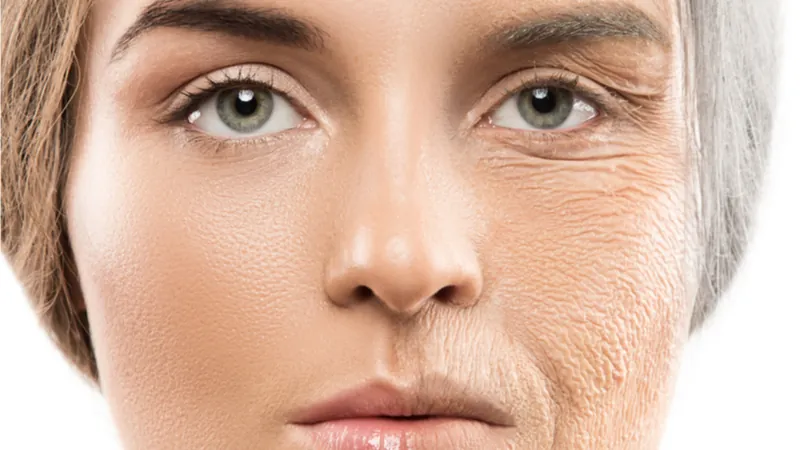The latest research out of the Journal of Cell Biology shines a light on why our skin loses its healing abilities as we age.

Read More
The skin’s ability to regenerate dramatically decreases with age. Injuries that would have healed in days without a trace in childhood can take weeks to heal, leave behind scars, or even become chronic in late adulthood. Aging is complex and likely impacts many parts of the skin regeneration process. However, there is some initial evidence to suggest that the skin’s decreased regenerative abilities with age disproportionately impair the healing phase known as re-epithelialization [1].
During this stage, skin cells (especially keratinocytes) multiply and migrate to the damaged area and separate the wound from the outside world by laying down new epithelial tissue [2]. As such, the proliferation and migration of these cells has been of great interest to researchers, but much is still unknown about how these activities are regulated during skin regeneration.
Researchers at the Tokyo Medical and Dental University have recently used human keratinocyte colonies as a model to identify some of the growth factors and signaling pathways that are essential for re-epithelialization [3].
Keratinocyte mobility is associated with expansive cell division
In a cellular culture, the keratinocytes formed both “expanding” and “stacking” colony structures. Cells in expanding colonies were highly proliferative and mobile, while the stacking colony contained fewer dividing cells that mostly remained in the same positions. Within both types of colonies, cells that were more proliferative also displayed more movement.
Cell tracking experiments showed that mobility was associated with expanding rather than stacking behaviors. Mobile cells were able to find additional space on the basal layer after dividing instead of layering on top of one another. A previously established computer simulation of keratinocyte cell culture further confirmed these observations, showing that increased cell rotational speed increased cell expansion.
Understanding the mechanisms behind keratinocyte mobility and proliferation
Next, the researchers compared cells from wounds in young and adult mice, focusing on receptor tyrosine kinases (RTKs). Among the RTKs, epidermal growth factor (EGF) receptor expression and phosphorylation emerged as the best candidate that was both associated with wound healing relative to normal skin and decreased in the wounds of older mice.
Returning to their cell culture model, the researchers found that stimulating keratinocytes with EGF increased their mobility, increased their formation of expanding colonies, and decreased their stacking behavior. Further investigation determined that EGF stimulation increased the COL17A1 protein, likely through activation of TIMP1 reducing COL17A1’s degradation. In additional experiments, blocking COL17A1 expression had effects that were the opposite of EGF stimulation, which suggests that the two are acting as a part of the same biochemical pathway. Lastly, the authors linked COL17A1’s effects on cell mobility to its control over actin and keratin filament networks.
Although further investigations are still required, COL17A1 stabilization by regulating its proteolysis is a candidate therapeutic approach for the improvement of age-associated impaired skin regeneration, including ulcers.
Conclusion
These results shed light on the decline of skin’s regenerative capabilities with age and possibly identify novel targets to reverse this trend. However, cells often behave very differently in culture than they do in the body. It is not clear how well the experimental model used in this study captures the wound healing process in vivo. Therefore, even though these experiments were carried out in human cells, animal studies will need to confirm these findings before there is enough evidence to move on to human trials.
Literature
[1] Holt, D.R. et al. Effect of age on wound healing in healthy human beings. Surgery (1992). https://pubmed.ncbi.nlm.nih.gov/1641768/
[2] Rousselle, P., Braye, F., and Dayan, G. Re-epithelialization of adult skin wounds: Cellular mechanisms and therapeutic strategies. Adv Drug Deliv Rev (2019) https://doi.org/10.1016/j.addr.2018.06.019
[3] Nanba, D. et al. EGFR-mediated epidermal stem cell motility drives skin regeneration through COL17A1 proteolysis. Journal of Cell Biology (2021). https://doi.org/10.1083/jcb.202012073




